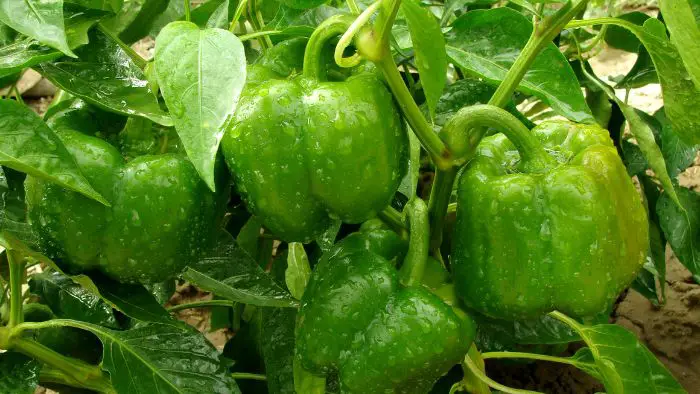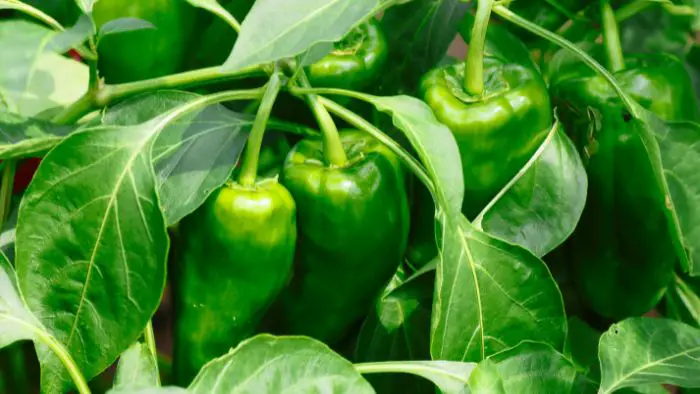Last Updated on August 26, 2022 by Guillermina
Getting the right bell pepper pH level for aquaponics is very important. This is because plants, bell peppers included can only efficiently take up and assimilate nutrients at specific pH levels. Let’s dive right into the discussion of this very important topic.
Peppers are hardy, have low nutrient requirements, and are low maintenance plants. They are a favorite vegetable to many people for several reasons such as their taste and versatility and ease of growth and production. Bell peppers are one of those plants that can last several seasons while bearing fruit.
Like any other plant, they require ideal growing conditions and these conditions include the right pH level.
Why Is Ph Important For Plant Growth?
pH is important for plants because it determines the availability of nutrients. In other words, you may have plenty of nutrients in a growing environment (such as soil or water), but if the pH is not right, the plants in that environment will not be able to access those nutrients. This will result in the plants dying and the nutrients going to waste
Why Is Ph So Important In Aquaponics?
When growing plants in the soil, pH is not much of a concern because soil has what is called a buffering capacity. Meaning that it can correct the pH to what is ideal for the plants. Aquaponics does not have this advantage, and this makes it extremely important to monitor and regulate the water pH if you want efficient plant growth and nutrient utilization.

How To Maintain The Right Bell Pepper Ph Level For Aquaponics.
The right bell pepper pH level for aquaponics is between 5.5 and 5.5. Peppers can however tolerate pH levels up to 7. It is essential that the pH is maintained at these levels or your bell peppers will die and not reproduce. There are a few ways available that you can use to control pH in your aquaponics system:
- Using chemicals such as calcium carbonate and potassium carbonate will help raise your water pH if it gets too low and acidic. These compounds also contain the elements calcium and potassium respectively, and these are essential for plants. Not only will you get the right bell pepper pH level for aquaponics by using these chemicals, but you also give your peppers additional nutrients which will make them thrive
- Another chemical to use if your pH gets too low is sodium hydroxide. With this option, however, it is essential that you also monitor that the sodium level in your water doesn’t get too high as it could lead to the detriment of your bell peppers. A bit of sodium will not do too much damage and may even be beneficial for the fish in your system by helping prevent some bacterial infections.
- If your pH gets too high in your aquaponics system, you can lower it using safe acids such as phosphoric acid. You can also purchase other acids to use such as this one.
- If your aquaponics system is still new, you need to let it mature before you can plant your peppers. This is to allow the bacteria in the filtration system to establish and efficiently filter the water in the system. This will also help maintain your system pH.
- Another way to use to get the right bell pepper pH level for aquaponics is to do a water change. If the pH gets too high, you can lower it by replacing a certain percentage of the total volume of the water in your system.
- Using alkaline growth media such as limestone may help increase the pH of your bell pepper aquaponics.
Why Grow Bell Peppers In An Aquaponics System?

Bell peppers are a great plant for growing in an aquaponics system for several reasons;
- They have a low nutrient requirement that can be fulfilled in a well-run and maintained aquaponics system,
- they do not necessarily need soil to grow and can use any growth media to attach their roots,
- they are the easiest to maintain of all types of peppers,
- they enable you to harvest more than one crop per plant, as they can last numerous growing seasons, and
- they have many amazing nutritional and health benefits.
These reasons and more make the trouble of maintaining the right pH for bell peppers in an aquaponics system worth it.
Other Conditions To Maintain For Efficient Growth Of Bell Peppers In An Aquaponics System
On top of maintaining the right bell pepper pH level for aquaponics, there are other environmental factors to consider. Bell peppers need adequate sunlight to grow and reproduce. You should therefore make sure that they are planted in an area where they can get plenty of sunlight. In colder climates, they should be planted in a greenhouse so they can maintain the right temperatures. If they are planted from seed and need to germinate, air temperatures should be maintained between 70°F and 90°F. After they have germinated, the temperature needs to be kept between 70°F and 85°F during the day for optimum growth. Giving your bell pepper plants additional nutrients (only if needed) that have balanced nitrogen, potassium and phosphorus levels is also vital for their growth.
Conclusion
Maintaining the right environmental conditions along with the right pH for your bell peppers in an aquaponics system will ensure that you get a plentiful harvest from your plants. We hope this article gave you all the information you needed to know about the right bell pepper pH level for aquaponics.
If you enjoyed reading this article, please share.
FAQs
Why are bell peppers good for hydroponics?
Bell peppers are good for aquaponics because they are very easy to grow and require low maintenance to grow and reproduce. They are also available in many different types which adds to the excitement of growing them.
How long does it take to grow peppers hydroponically?
Depending on the type of pepper and assuming ideal growing conditions in the hydroponic system, peppers can take between 50-80 days to mature.
What hydroponic system is best for peppers?
Flooded and ebb-and-flow systems are ideal for growing peppers. These systems are easy to maintain and will ensure that your pepper plants get the right growing conditions and sufficient nutrients to grow.
How many peppers will one plant produce?
This varies according to the type of pepper being grown. On average, one pepper plant will produce up to 10 plants per year.

An aquaculture specialist and freelance writer. Passionate about anything sustainable living, such as growing your own food, and if you can do it in conjunction with fish farming, even better! I currently work as an aquaculture researcher where I can expand and share my knowledge and skills on aquaculture, crop farming and adding value to wastewater by using it to grow food products. I enjoy reading and learning as much as possible, and writing is another avenue for me to share the knowledge I gain with others. I want my writing to inspire people to try their hand at gardening, whether indoors or outdoors. You can even start by keeping a few houseplants indoors to help you gain a bit of confidence if you need to.


